
What is it? You see (or rather perceive) a tilted line (tilted upwards), even though the dot is moving horizontally in raster scan fashion.
Explanation: I think this illusion occurs because of the persistence of vision. It maybe taboo to use this term, as the persistence of vision concept was used erroneously for a long time to explain apparent motion. I use the term to refer to the fact that if an input to the visual system occurs at time t, its effect lasts for some finite time beyond t (about 100-200 ms). That is what persistence of vision means to me. I have illustrated the concept in the diagram below (apologies to those who find this too didactic and pedagogical):

It is because of this persistence of vision that we perceive as many as 5-6 dots in the display at any time instant, even though only a single dot is displayed in each frame. At any time instant, suppose we perceive as many as 6 dots. Assume that a scanline can fit 6 dots. Then at any time following configurations are possible (dots are labelled 1-6 in temporal order, 6 is current dot and 1 is the dot displayed 100 ms earlier, which we still perceive because of persistence of vision):
Case 1:
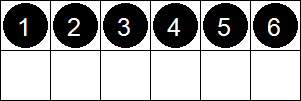
Case 2:
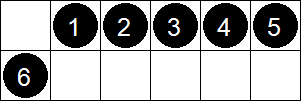
Case 3:
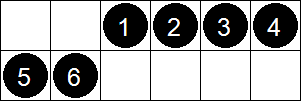
Case 4:
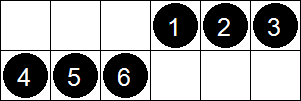
Case 5:
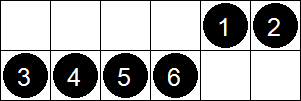
Case 6:
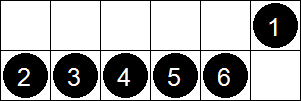
The average of these configurations is shown below which is our perception:
Perception:

The direction in which motion should be perceived (up-right or down-left?) is not obvious to me. Since the most recent dot to be perceived is either at the same level, or below other dots, this line of reasoning suggests that motion should be perceived down-left. This is opposite of our peception, which is up-right. Below I have shown the time averaged optical flow computed by the Watson Ahumada motion detector on this display. Interestingly, it predicts motion to down-left. Download source code (C#) and precompiled binary here.
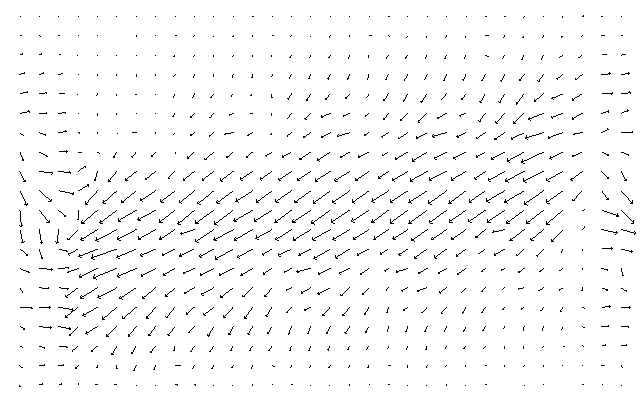
Above analysis suggests that if we increase the width of a scanline, the illusion should diminish and eventually vanish. This is indeed true as you can verify by changing the width using the slider. The following figure shows the time averaged optical flow assuming a scanline can fit 12 dots (instead of 6 as we have been assuming before):
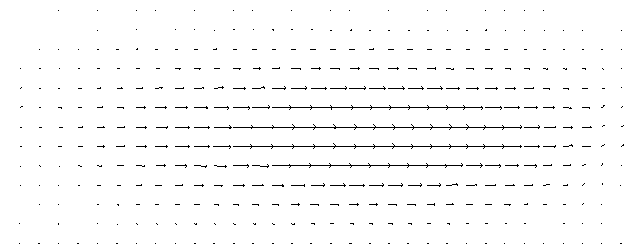
Another way to think of the illusion is to consider motion resulting from just two dots. Most of the time motion is from left to right, but at the boundary motion is from up-right to down-left. Averaging the vectors gives a vector slightly tilted towards bottom-right. This does NOT match perception.
